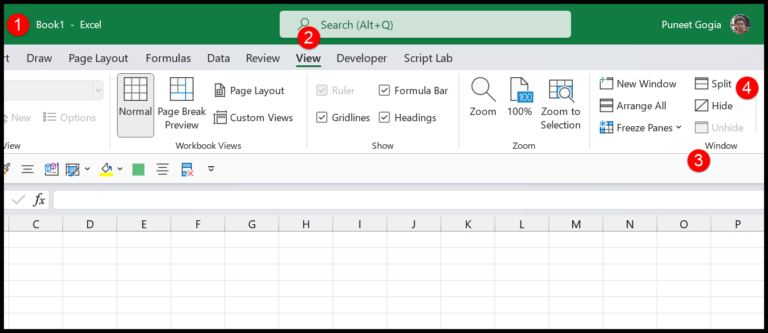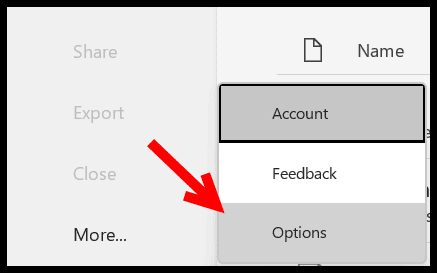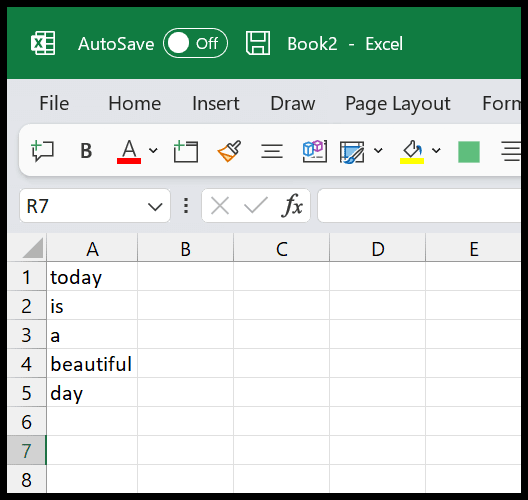Business-to-business software as a service, commonly known as B2B SaaS, is transforming the way companies operate by providing cloud-based solutions tailored specifically for organizational use. Unlike business-to-consumer SaaS, which focuses on individual users, B2B SaaS is designed to meet the complex needs of businesses as a whole, often serving as an integral component in the operations, management, and growth strategies of these organizations.
These cloud-based applications offer a range of benefits: they’re typically more cost-effective than traditional on-premises software, offer greater scalability, and allow for rapid updates and improvements. Companies are increasingly relying on B2B SaaS products for functions such as customer relationship management, enterprise resource planning, and many other critical business processes.
In recent years, the SaaS model has seen an upsurge in adoption, with an expanding array of services available to businesses looking to leverage cloud computing for their operational needs. The rise of B2B SaaS reflects a broader shift towards digitized, subscription-based services, where agility and data-driven decision-making are prime commodities for competitive businesses.
Understanding B2B SaaS
B2B SaaS, or Business-to-Business Software as a Service, has reshaped how companies leverage technology. Unlike traditional software that requires installation and maintenance, SaaS solutions are cloud-based; this means they’re accessible over the internet, offering flexibility and scalability to businesses.
Key Characteristics of B2B SaaS:
- Subscription-based model: Businesses pay a recurring fee, often monthly or annually.
- Cloud-hosted: Applications are hosted on a remote server for easy access.
- Maintenance and updates: Handled by the SaaS provider, not the user.
Rather than selling to individual consumers, B2B SaaS targets other businesses. The applications cover a vast range of needs, from automating mundane tasks to providing advanced analytics.
SaaS in the Market:
- The SaaS market is a competitive landscape, innovating constantly.
- SaaS solutions often promise better cost-effectiveness over on-premises software.
Advantages for Businesses:
- Efficiency: Streamline operations without heavy infrastructure.
- Scalability: Adjust services based on current needs.
- Collaboration: Facilitate teamwork across different locations.
The development of B2B SaaS solutions is guided by the need to solve business pain points, helping organizations operate effectively. As companies continue to pivot towards digital solutions, the role of cloud-based software solutions in the SaaS industry becomes increasingly central, marking a prominent shift in software development strategies.
Key Benefits of B2B SaaS
In the world of B2B SaaS, companies enjoy a multitude of advantages that can revolutionize their operations. From on-the-fly scalability to robust security measures, these services facilitate a more streamlined approach to business software usage.
Scalability
SaaS solutions provide the ability to scale services up or down based on demand. This means businesses only pay for what they need, when they need it. Moreover, cloud storage capabilities allow for escalating data requirements without the need for physical hardware expansion.
Flexibility
Flexibility is a hallmark of B2B SaaS offerings, giving businesses the freedom to access their tools and data from anywhere. Automatic updates ensure that all users have access to the latest features and fixes without manual intervention.
Cost-Effectiveness
Subscribing to B2B SaaS services often results in significant cost savings due to a subscription-based model that eliminates the need for large upfront purchases. Businesses benefit from regular updates and maintenance as part of their subscription, reducing the need for dedicated in-house IT staff for these tasks.
Accessibility
Easy access to applications and data is a given with B2B SaaS, due to centralized hosting in the cloud. Users can dive into their work from any location, on any device, as long as they have an internet connection.
Security
B2B SaaS providers typically invest heavily in security, implementing strict protocols to protect their clients’ data. Regular updates not only add new features but also patch vulnerabilities, ensuring a secure environment. Secure cloud storage further enhances data protection measures.
Exploring SaaS Applications
The versatility of SaaS is evident in its widespread application across various business functions. From enhancing customer interactions to streamlining project workflows, accessible cloud-based tools are at the core of modern business operations.
CRM
Customer Relationship Management (CRM) software acts as the backbone for managing interactions and data throughout the customer lifecycle. Salesforce sets the bar high for CRM, offering a comprehensive suite for sales, customer service, marketing automation, and analytics. Similarly, HubSpot serves as a powerful and user-friendly CRM platform, integrating sales, content management, and marketing services tailored to businesses’ needs.
ERP
Enterprise Resource Planning (ERP) integrates critical business processes across finance, HR, services, and supply chain into a unified system. Microsoft Dynamics 365 is a notable example offering agility in business operations. ERP solutions like the ones provided by SAP and Oracle are also instrumental for businesses looking for robust analytics, machine learning, and Internet of Things (IoT) capabilities.
Email Marketing
Effective email marketing systems are key to maintaining customer engagement and growth. Mailchimp is a popular choice due to its ease-of-use and targeted campaign features. Meanwhile, platforms like SendGrid, now part of Twilio, provide powerful email delivery services, ensuring that businesses’ email communications are scalable and reliable.
Accounting Software
Precise and user-friendly accounting software is essential for financial management and compliance. Xero offers a cloud-based platform with tools for invoicing, reporting, expenses, and payroll. It ensures businesses maintain robust financial health. QuickBooks Online also helps companies to efficiently track expenses, generate reports, and process payroll through its integrated accounting solutions.
Project Management
The ability to coordinate teams and projects effectively is simplified by intuitive SaaS project management tools. Notion provides a flexible workspace for notes, tasks, wikis, and databases. For more robust project tracking, ClickUp gives teams the functions they need to plan, track, and manage work with integrated to-do lists, spreadsheets, and email among others. Asana and Trello, now part of Atlassian, facilitate workflow management with their easy-to-use interfaces and powerful integration capabilities.
SaaS in Marketing and Sales
In the ever-evolving world of B2B SaaS, marketing and sales are integral to a company’s growth, focusing on attracting leads, nurturing them, and ultimately closing deals through strategic approaches and platforms.
Lead Generation
Effective lead generation for B2B SaaS hinges on a mix of SEO and social media marketing to attract potential customers. Companies leverage marketing platforms like HubSpot to streamline these efforts and track their customer acquisition cost (CAC). Webinars, as indicated in the search results, have become a formidable tool for generating high-quality leads, effectively demonstrating a product’s value to prospects.
- SEO: Optimizing content for search engines improves visibility and attracts more qualified leads.
- Social Media Marketing: Companies use platforms like LinkedIn for targeted outreach and to engage with potential leads.
Content Marketing
Content marketing for B2B SaaS is about delivering quality information that moves buyers through the sales funnel. This content can vary from detailed infographics to insightful case studies. Additionally, email marketing campaigns are crafted to convert leads by providing tailored, relevant content that aligns with the customer’s stage in the buyer’s journey.
- Infographics: Break down complex information into digestible visuals.
- Email Marketing: Personalized email workflows nurture leads towards the decision-making phase.
Sales Strategies
Sales strategies in B2B SaaS focus on personalization and solution-based selling. A CRM like Salesforce is used to track interactions and tailor the sales approach to each prospect. Paid ads can be effective, but their ROI must be meticulously monitored due to high competition and CAC. Sales teams also use HubSpot to manage deal pipelines and automate follow-ups, ensuring no opportunities slip through.
- CRM Implementation: Salesforce automates sales tasks and records every customer interaction.
- Paid Ads: Targeted campaigns are designed to reach decision-makers in companies, promoting the SaaS product directly.
Optimizing Business Operations
To stay ahead in the competitive market, businesses increasingly rely on software solutions geared toward optimizing their various operations, enabling them to work smarter, not harder.
Productivity Tools
Productivity tools have become the backbone of business operations, particularly with the rise of remote work. Tools like ClickUp offer centralized project and resource management, crucial for keeping teams aligned and tasks progressing. Microsoft Office 365 and Google Workspace cater to this by providing a suite of applications for both desktop and web browser, facilitating seamless document creation, spreadsheets, and presentations. The convenience of having these tools accessible from anywhere significantly boosts productivity.
Communication Platforms
Efficient communication platforms are another cornerstone for modern businesses. Slack stands out as a solution for immediate messaging and collaboration, bridging gaps between remote and in-office teams. It helps in reducing email clutter by providing real-time communication channels. Zendesk, while primarily known as a customer service tool, also aids internal communication by streamlining customer queries into a centralized system that can be tackled collaboratively.
Financial Management
When it comes to financial management, detailing accounts and finances in an organized manner is crucial. Software like Xero offers financial management solutions that are vital for precision and clarity in a company’s financial health. Furthermore, integrating enterprise resource planning (ERP) systems helps in consolidating financial data with other operational metrics, providing a comprehensive view for informed decisions.
Pricing Models and Revenue
Selecting an effective pricing model is vital for B2B SaaS companies as it directly impacts monthly recurring revenue (MRR) and annual recurring revenue (ARR). These models are designed to stabilize revenue streams through recurring payments and shape the customer lifecycle.
Subscription-Based
Subscription-based pricing structures are the cornerstone of SaaS revenue. Customers pay on a regular basis—monthly or annually—for continuous access to the software. This model provides a predictable stream of income that can be measured through MRR or ARR, which are key indicators of the company’s financial health. Subscription levels typically vary, allowing businesses to scale the provided features to different price points that suit a variety of customer needs.
| Subscription Type | Description | Benefits |
|---|---|---|
| Monthly | Charges are made every month. | Flexibility for customers; higher short-term revenue. |
| Annual | A one-time charge for the year. | Lower churn rates; secure longer commitment. |
Freemium and Trials
Freemium models and free trials serve as a low-risk entry point for potential customers. Users can experience basic features at no cost with the freemium model or receive full access for a limited time during a trial. The key advantage of this approach is that it can lead to high conversion rates when customers witness the value of the software firsthand.
- Freemium: Typically includes basic features without time constraints.
- Free Trial: Grants access to full features but for a limited period (e.g., 14 to 30 days).
Churn and Retention
Churn rate and customer retention are critical metrics in the SaaS industry. Churn rate refers to the percentage of customers who stop using the service over a given period. High churn rates can indicate dissatisfaction with the product or service and can significantly impact the predictability of revenue. In contrast, customer retention strategies are aimed at minimizing churn and maintaining a stable user base, contributing positively to both MRR and ARR.
| Retention Strategy | Impact on Churn |
|---|---|
| Regular feature updates | Keeps the service relevant. |
| Responsive customer support | Resolves issues quickly to prevent cancellations. |
Customer Experience in SaaS
In the realm of B2B SaaS, the customer experience is pivotal, playing a crucial role in how they interact with the SaaS solutions. It’s about providing seamless access, effective vendor support, and fostering a positive customer relationship from the get-go.
Onboarding
When a customer signs up for a SaaS solution, the initial onboarding process sets the tone for their entire journey. It’s not just about walking them through the functionalities; it’s about ensuring they fully embrace and utilize the solution. Key elements here include:
- Ease of Access: Customers should find the platform intuitive, with a clean interface that allows for straightforward user navigation.
- Education: Customers need to understand how to extract the maximum value from their investment. Information provided through tutorials or guided tours can be indispensable.
Support
Customer support and service in the B2B SaaS world cannot be understated. Support isn’t just reactive; it’s proactive. They don’t just solve problems; they prevent them. Consider these points:
- Availability: Support should be accessible through various channels, catering to the customer’s preference, whether it’s chat, email, or phone.
- Responsiveness: Quick response times and informed answers are keys to keeping the relationship solid and trustful.
Customer Relationship Management (CRM) systems often play a central role by tracking interactions and ensuring customer needs are met promptly. They’re invaluable for maintaining clear, ongoing communication and for a vendor to stay attuned to target audience trends and demands.
SaaS Platforms and Ecosystems
SaaS ecosystems have become integral for businesses, offering cloud-based solutions that enhance operations. They span various services, including PaaS and marketplaces for add-ons, and cater to the ever-evolving demand for product-led growth and integration.
Integration Options
Integration is a cornerstone feature of any SaaS platform, impacting how seamlessly it fits into existing workflows. Cloud-based solution providers typically offer robust APIs and toolkits, enabling the integration of various ecommerce platforms, CRMs, and other enterprise systems within a user’s tech stack. For instance:
- eCommerce integration connects SaaS platforms with online sales channels, allowing for streamlined inventory and order management.
- PaaS integration allows for the extension of the platform’s capabilities, often enabling custom feature additions through app development.
Integration helps ensure that users can add specific functionalities that the core software may not originally have, often through the use of mobile apps or other add-ons.
Marketplaces
Marketplaces within SaaS ecosystems serve as a hub for discovering and employing a wide range of extended functionalities.
Popular types of marketplace offerings:
- Add-Ons: Applications or features that users can add to their existing platform to gain additional capabilities.
- AppStores: Online stores like Salesforce’s AppExchange or Shopify’s App Store where users find a plethora of third-party integrations and add-ons tailored to their needs.
Through these marketplaces, companies are able to adapt their software suite to include the exact tools they need, promoting a product-led approach where the product experience helps drive the adoption and expansion of the software’s use cases.
Challenges and Considerations
In the B2B SaaS realm, companies face specific hurdles that can impact their operations. Key among these are data security and privacy concerns, adhering to legal compliance, and navigating the constraints of customization.
Data Security and Privacy
With businesses increasingly migrating operations to the cloud, the need for robust data security measures is imperative. They must safeguard against breaches, leaks, or losses to maintain client trust and avoid long-term negative consequences. Privacy and security protocols become paramount in protecting sensitive customer data and ensuring a secure service environment.
Legal Compliance
SaaS providers navigate a complex web of regulations that vary by region and industry. For example, they must comply with international standards like GDPR for European customers or HIPAA for healthcare data in the United States. These regulations dictate how they manage, store, and process user data.
Customization Limitations
While SaaS solutions offer a plethora of benefits, they often come with limited customization options. Off-the-shelf SaaS products may not fit the exact needs of every business, and some may require additional features or integrations. Addressing these limitations while still delivering scalable and efficient software solutions is a consistent challenge for SaaS providers.
Future Trends in B2B SaaS
B2B SaaS is gearing up for significant changes, with technological advancements driving a more efficient and competitive market.
AI and Automation
Artificial intelligence (AI) and machine learning are shaking things up in the SaaS world. These technologies are not only boosting efficiency but are also becoming key differentiators for competitive advantage. In 2024, businesses can expect AI to play a major role in automating complex processes, delivering insights from data analytics, and enhancing customer experiences. With AI-driven personalization, businesses are poised to offer more tailored services to their clients, making B2B SaaS solutions more intuitive and valuable.
SaaS and Remote Work
The surge in remote work has created a massive demand for SaaS solutions that facilitate collaboration and productivity outside traditional office environments. Companies are leveraging SaaS to stay connected and remain operational, regardless of their team’s location. Features like real-time collaboration tools, project management software, and virtual communication platforms are becoming increasingly integrated into B2B SaaS offerings to support the remote workforce.
These trends in AI, automation, and remote work capabilities are setting the stage for an evolved B2B SaaS industry that prioritizes innovation, scalability, and customer success.
Frequently Asked Questions
This section addresses some of the most common inquiries related to B2B SaaS, providing concise and insightful answers relevant to marketing, scaling, and operation within this niche sector.
How can a company effectively market its B2B SaaS products?
Companies can enhance their B2B SaaS product visibility by establishing a strong online presence on review sites and investing heavily in digital marketing efforts, including content marketing, SEO, and targeted advertising. Building credibility, trust, and brand recognition is essential.
Which metrics are crucial for measuring the success of a B2B SaaS startup?
Key performance indicators for a B2B SaaS startup include Customer Lifetime Value (CLV), Customer Acquisition Cost (CAC), Monthly Recurring Revenue (MRR), Churn Rate, and the ratio of Lifetime Value to Customer Acquisition Cost (LTV). These metrics help gauge financial health and growth potential.
What strategies work best for scaling a B2B SaaS company?
Effective strategies for scaling a B2B SaaS company include focusing on customer retention through excellent service, expanding into new markets, enhancing the product based on user feedback, and employing a sales approach tailored to the unique needs of business clients.
In what ways do B2B SaaS business models differ from B2C?
B2B SaaS models typically involve longer sales cycles, higher price points, and more complex decision-making processes, as solutions are sold to other businesses with specific needs. In contrast, B2C SaaS is targeted towards individual consumers and often emphasizes user-friendliness and mass-market appeal.
What kinds of jobs are available in the B2B SaaS industry?
Jobs in the B2B SaaS industry range from software development, sales, and customer support to specialized roles such as product management, data analysis, and marketing. These roles focus on delivering and improving services catered to business clients.
Can you recommend any courses or resources for learning about B2B SaaS?
Individuals can learn about B2B SaaS through online resources like SaaS-specific blogs, industry analyses, and community forums. Additionally, there are numerous online courses and certifications available that cover the fundamentals of SaaS marketing, sales strategies, and business model analysis.



